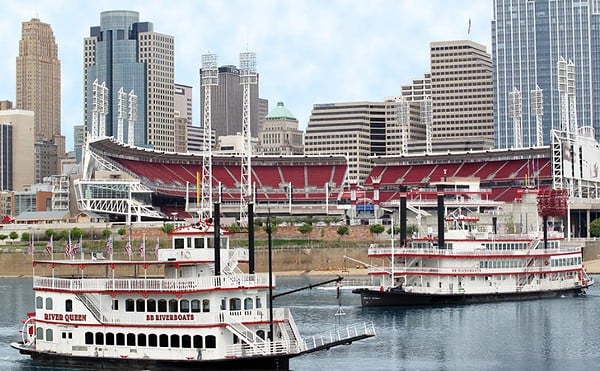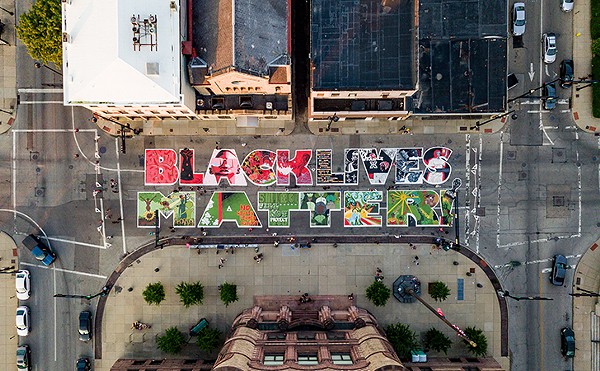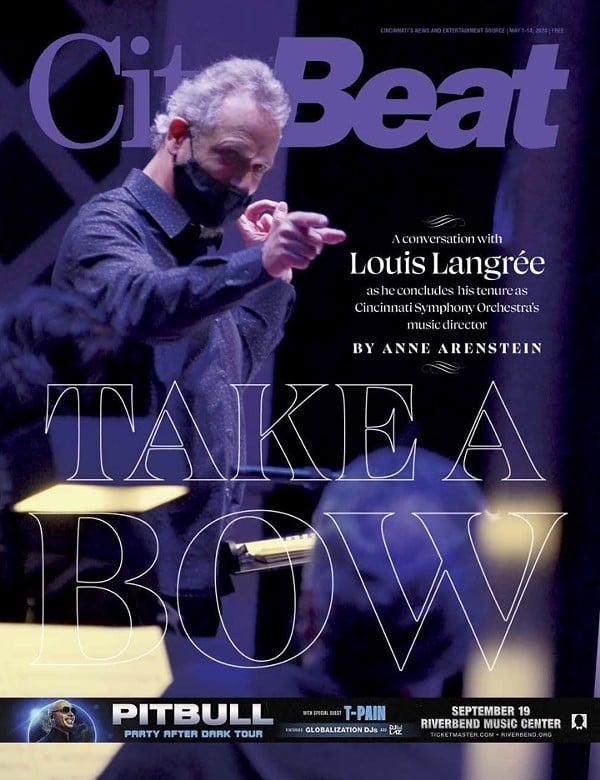Will The Time Traveler’s Wife turn out to be the loveliest adaptation of a novel to get boos from diehard fans of the book? Could be.
The ending, for one, is different. Not a lot different — the altered ending still makes sense emotionally — but some will scream, “Ohmygod, they ruined the book!”
They didn’t ruin the movie, I promise. But some will disagree with me.
The detours into dark alleys of Audrey Niffenegger’s beloved novel have mostly been eliminated or softened. There are interesting and intriguing and dangerous and nasty things you can do when you can meet future or past versions of yourself or when you have foreknowledge or sidewise knowledge of events and when you don’t have to worry about the time-travel paradoxes that most science fiction worries about. You can have sex with yourself; you can dish out revenge both cold (on your side) and hot (as your victim will experience it). You can do things most people couldn’t imagine.
You would not guess from screenwriter Bruce Joel Rubin and director Robert Schwentke’s movie version that Niffenegger might be a rather twisted kind of gal for inventing such deeds for her hero, Henry DeTamble (Eric Bana). But she did, even if none of them are here.
That’s all fine, really, because the core of what makes The Time Traveler’s Wife so special has been retained. The poignant tenderness and the sharp significance of the metaphor of the twisty, time-bending romance of Henry, a Chicago librarian, and Clare Abshire (Rachel McAdams), an artist, are most important. The movie gets it so right that it will linger in your imagination just as the novel did.
Thank goodness: I couldn’t have taken it if Schwentke and Rubin — who did write the appallingly phony Ghost, it must be remembered — had screwed it up, because I love the book, too. They’ve made a film that is achingly romantic but never schmaltzy and never less than charming and surprising.
Here’s why: Clare is only 6 years old the first time she meets Henry, when he is thirtysomething. But Henry is only in his twenties the first time he meets Clare, when she’s around 20. It’s because he’s an inadvertent time traveler. He suffers from a genetic anomaly that causes him to become displaced in time at random moments he has no control over, though sometimes stress triggers it. He melts away, leaving his clothes behind, and journeys back to moments in his own past or ahead to moments in his own future.
He’s learned to be clever about scrounging for clothes and finding shelter wherever and whenever he arrives. And often that means cultivating a friend in the places he travels to — like young Clare, who brings him clothes and food and entertains him while he waits to melt back to the future again. Events and people who are important to Henry draw him like gravity, very much in the same way that we can't help but dwell on powerful memories.
The film opens with young Henry, about 8 years old, experiencing his first instance of time travel. He disappears out of his mother’s car after banging his head at the beginning of a drawn-out crash, visits a cozy moment at home in the recent past and returns just in time to see, from the side of the road, the car get demolished by another vehicle, killing his mother.
And then an older Henry is suddenly there to comfort young Henry. You’ll visit this moment several times, old Henry tells young Henry, and you’ll never be able to stop the crash from happening.
The film doesn’t linger on this dark subject matter. It focuses mostly Clare and Henry’s relationship and how sensitively and tenderly the strangeness of it hardly seems strange at all. Sure, a little girl’s “dream man” becomes the real thing, and that’s unlikely, but this is science fiction of a more sophisticated allegorical order, not a wish-fulfillment one.
And, yes, this is science fiction, of the kind that really knows what the genre is all about: not gadgets and spaceships (cool as they can be), but what it means to be human. Here, it’s our capacity to love that is explored, and the things we typically take as metaphors for the complications and joys of relationships — the feeling that we’re waiting for someone; the sense of destiny and inevitability that comes with falling in love — are made real, the stuff of only the truest of true loves. Grade: A-





